Dog Behavior Guide
Introduction
This guide is designed to train the dog owner to become a dog handler. The difference is, a dog handler understands how their behavior affects their dog’s behavior and acts accordingly to get the best possible results from the dog to make them a beloved member of the family.
Some of what I have to say may sound harsh or unrealistic, but I promise the more techniqies you implement consistenly, the better your dog will perform.
-Monique Aguilar – Dog Trainer
Dog Behavior Development
Home Sweet Home
Dogs belong inside the home. There is no such thing as an “outside pet dog”; they have been domesticated over thousands of years to be a member of the human family.
There is no such thing as a dog being “both” an inside and outside dog. Owners typically use this phrase when they leave the dog outside all day while they’re at work, and then bring him in when they get home. That’s an outside dog. Some dogs only have access to outside and maybe an enclose porch or garage. That’s an outside dog. An inside dog spends at least 85% of their day inside the house, has access to most rooms, has free reign to move about the house, and only goes outside to eliminate, play, lounge around or respond to sounds or movements.
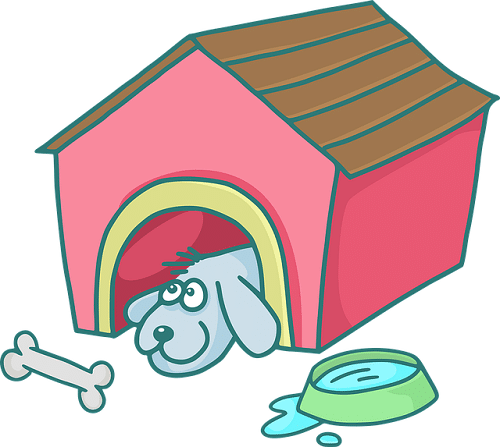
You cannot take an outside dog and expect them to automatically know how behave inside the home. Many people think they can get the outside dog trained first, and then they’ll just naturally become an inside dog. It doesn’t work that way. If you want to transition your dog from being an outside dog to an inside dog, you need to let them live in the house for at least two weeks and establish boundaries, structure, limitations, and discipline before obedience training can even begin.

Dogs Really Are Man’s Best Friend
Dog behavior, good and bad, is 75% a reflection of the human influence around them and the environment they live in, and 25% wolf. Yes, dogs still have wolfly instincts, but the domesticated dog is estimated to be fifteen thousand years removed from the wolf. It’s not what dominates a pet dog’s behavior. Through evolution, all species, including humans, live today as a result of survival of the fittest. Except the domesticated dog. For dogs, it was survival of the friendliest (to humans). That’s why they are known as “man’s best friend”.
Dogs are the only species on earth that want to be with humans. Even domesticated cats can take or leave us; as long as they have food, water, and a clean litter box, cats could care less whether a human is around. Dogs have a strong natural instinct to want to live with humans. They love us unconditionally, they want to live indoors with us, they want to eat with us, sleep with us, play with us, protect us, comfort us, walk next to us, please us, make us happy, go every where with us, perform jobs for us, and they would literally risk their lives to save ours. In exchange, dogs have given up one of the most important instinct that applies to every other species on earth: self sustainability. Dogs allow themselves to be completely dependent on humans for their survival.
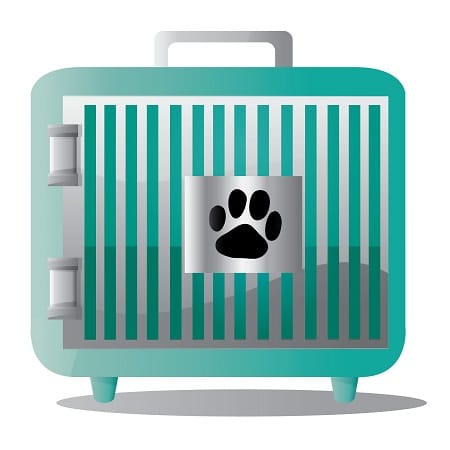
Dog Crate Training
If you don’t have a crate, get one, preferably a hard-shell airline style crate. A crate is not doggie jail. Quite the contrary, it provides a safe den environment that has a positive impact on your dog’s psyche.
A crate is the most powerful training tool in providing control and structure in your dog’s life. It will single-handedly take a hyper or out-of-control dog and turn them in to calm and attentive dog. When the dog is in training, it should be crated several times per day.
A crate should be tall enough for your dog to stand with his head up, and wide enough for him to turn around and lie down comfortably. The crate should be placed in an area of the home that gets a lot of traffic. The dog should still feel like they are part of the family when crated. Don’t keep them in a crate in the garage or laundry room.
Dog Leash
A leash is the most powerful training tool available to humans. In the first few weeks or months of training, the dog should be kept on a leash or in a crate AT ALL TIMES. A puppy or new dog in the home should never have free range of the house or yard. It may seem strange to have your dog on a leash inside the home, but it is critical to establishing boundaries, structure, and discipline; it will help develop a calm and confident dog who is in tune with you and understand what you expect from her.
If you’re watching TV, working on your computer or don’t want her underfoot while you’re cooking dinner, tether the leash to a piece of furniture close by. The most important thing is that the dog is always near you and cannot run all over the house. Having her on a leash means you can quickly correct her if she makes a mistake or exhibits unwanted behavior. Never use a “flexi-lead” or retractable leash.
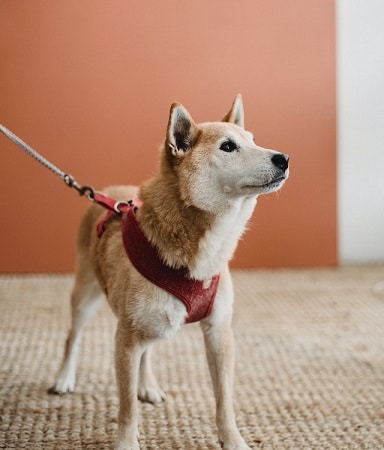
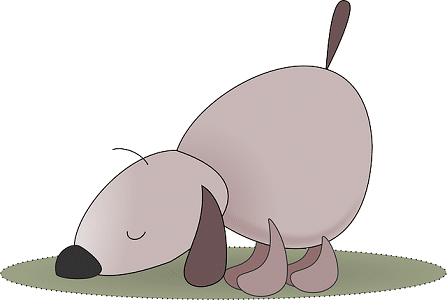
Housebreaking Your Dog
The fastest way to achieve housebreaking is crate training. Whether a puppy or adult dog, they should be crated, on a leash, or directly supervised in a confined space, at all times so that they can be taken out at the first sign they need to eliminate, i.e. sniffing the floor, circling or copping a squat. Never use pee pads; it trains the dog to go potty inside the house and that is not what you want.
If you need help with housebreaking your puppy or older dog, See our Housebreaking Training Guide.
Dog Harnesses & Collars
A harness is designed to encourage a dog to pull by placing the restraint on the strongest part of the dog’s body, his chest and shoulders. They feel the pressure of the harness on their body and they instinctually pull. Think of sled dogs. A harness as a fashion statement is fine, but the leash should be connected to the collar, not the harness.
Your dog’s collar should be flat, buckle style, wide, and appropriately sized for your dog’s neck. A prong collar is excellent for training and heeling, especially for large and strong breeds. Stay clear of choker-chain collars that will choke your dog by applying too much pressure to the trachea.
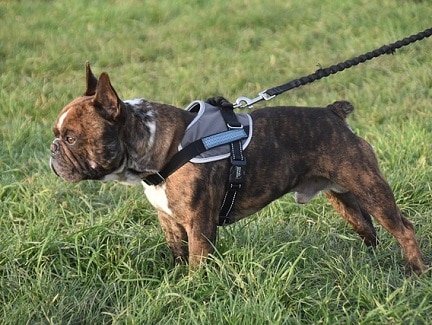
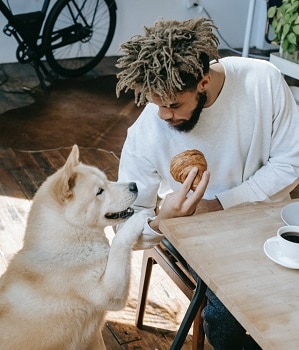
Consistency with Your Dog
Dogs want to behave, they just need to know what the rules are.
Dogs don’t understand the concept of “sometimes”. Decide early what you will allow your dog to do and what you will not tolerate. If your dog is not allowed on the couch, never let them get on the couch and correct them the minute they get on without permission. If you do allow your dog on the couch, they are always allowed on the couch, and that means all couches everywhere. Dogs won’t understand that it’s ok for them to get on the couch at home, but they aren’t allowed on the couch at grandma’s house.
If you don’t want your dog to jump on you, don’t encourage them to jump when playing. If you don’t want your dog to beg for food, don’t give them people food. If you don’t want your puppy to bite, don’t allow them to bite while playing and don’t put your fingers in their mouth.
Correcting Your Dog
Dogs live in the moment; they don’t remember what they did five minutes ago. To correct unwanted behaviors such as jumping, biting, nipping, digging, chewing on your shoes, or peeing/pooping in the house, you MUST CATCH THEM IN THE ACT! It does absolutely no good to try to correct a dog after the fact; they won’t understand why you are upset with them. If you display anger or frustration, they will learn to fear you.
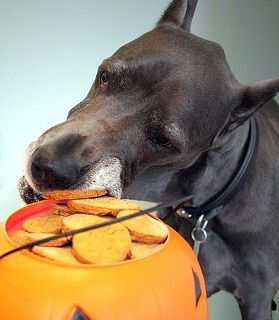
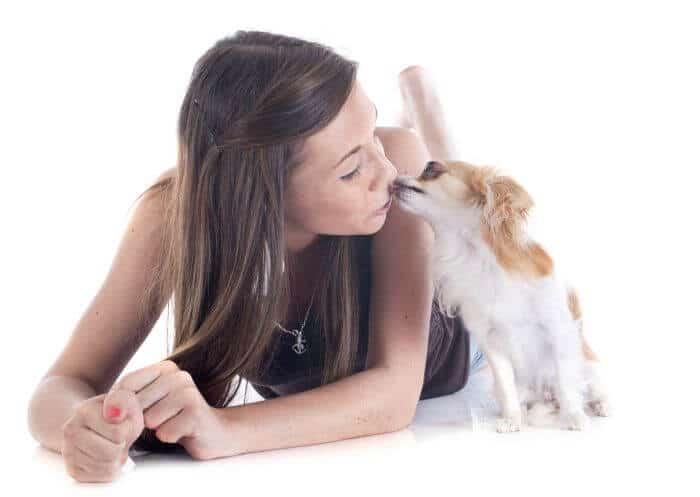
Face to Snout
Most people know that dogs greet each other by sniffing each other’s butts. But they also sniff the corners of the other dog’s mouth as a way of learning more about them and letting them know they don’t mean any harm.
Every dog-loving human is guilty of holding up a cute puppy to their face and giving them kisses. Who can resist? Unfortunately, dog behavior studies have shown that this act we do when they are puppies is the instinctual cause of why dogs jump on people to greet them when they get older and bigger. They are trying to get close to your face to smell the corner of your mouth the way you conditioned them to do when they were puppies.
Attention
In the wild, the mama wolf does not pay attention to her pups all day. She has her own chores to do, like hunting for food. When they are old enough, she expects the pups to entertain themselves and when they bother her when she’s not in the mood to play, she gives them a gentle bite on the neck to send them away.
You should not feel obligated to give your dog your full attention all day long. They should live comfortably in the house whether you are paying attention to them or not. If they are demanding your attention when you are busy, don’t be shy by gently pushing them away, ignoring them, or crating them.
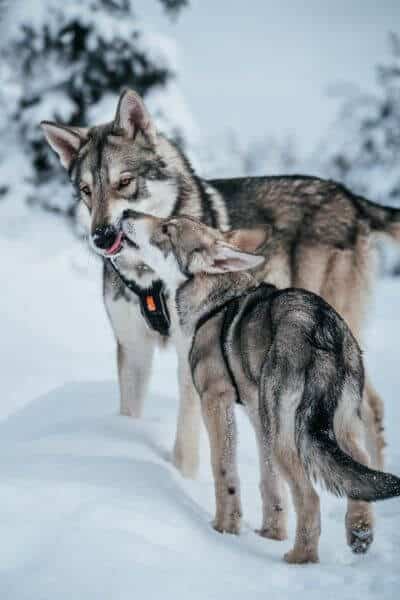
Respect of Space
The greatest form of respect that dogs show each other is giving physical space between them. When you see a bunch of dogs together, some are physically touching each other while they play, but watch the other dogs that aren’t playing. They walk around as if there is an invisible bubble around them, giving a few feet of space between them and the other dogs. This is respect.
Humans completely destroy a dog’s natural instinct to respect space the minute they pick up a puppy from its litter and take it home. Humans literally cannot stop touching puppies, holding them, petting them, stroking them, cuddling them, scratching their ears, giving them belly rubs.
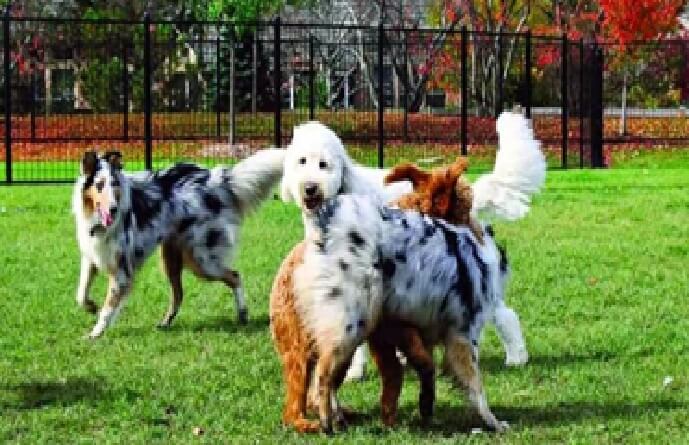
We love it when puppies fall asleep in our lap. Puppies learn that all this touching must mean that humans want them to be extremely close to them. So, when puppies come up to us to be petted, they think they’re doing us a favor by allowing us to pet them. It’s cute when they’re little; not so much when they turn into a 50-pound dog jumping on you, pawing at you, crawling all over you, demanding attention to be petted.
So how do we fix this? We have to re-train dogs to learn to respect their human space. They need to learn that you will pet them when you want to pet them, not when they demand it. Don’t let your dog jump on you, paw at you, crawl all over you, or sit on you demanding attention. When they come into your space, gently push them away. It may take several times. When they stop moving into your space, then you can pet them.

Separation Anxiety
Being alone is an unnatural instinct for a dog. Don’t mistake the fact that the mama wolf doesn’t pay attention to her pups all day to mean they are left alone. In the wild, wolves are never alone from the moment they are born, they are never alone. Mom and Dad may go off to hunt, but they leave their pups with babysitters: brothers, sisters, aunts, uncles, and cousins. As they grow up, wolves are always with their pack.
The only exceptions are when an alpha male leaves the pack to go out and start his own pack, and when a female wolf is excommunicated from the pack, usually for committing the sin of getting pregnant by the lone wolf.
Domesticated dogs need to learn to be alone. Fortunately, this typically happens naturally when a puppy or dog is first brought home. They quickly become accustomed to the routine comings and goings of humans in their lives as they move from room to room and leave the house for short and long periods of time.
But some dogs either have a stronger genetic instinctual fear of being alone, or they’ve been traumatized somehow when left alone. This is a sad and unhealthy state of mind for a dog to live in. Unfortunately, separation anxiety cannot be trained out of a dog, but there are things you can do to help them.
Fur Babies
Statistics show that more and more adults view their dogs as children, and many couples even choose to have dogs rather than children. Treating a dog too much like a human/child often leads to behavioral problems. The dog will likely become confused and frustrated because they don’t understand their place in the household. If you don’t take the lead, she will assume she is the leader and will develop behavior problems because she won’t understand why you are not following her. If your dog acts like a fool to get your attention, barks incessantly, paws at you, insists on being petted or picked up, you are paying way too much attention to her.
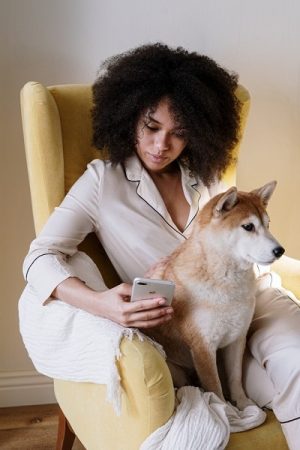

Dog Obedience Training
Obedience does not happen overnight. It requires frequent and consistent execution of commands. Boss your dog around! For no particular reason, throw commands at him throughout the day. Sit. Down. Come, Place. Stay. Leave It. Commands should be worked in to every part of your dog’s day. Your dog will begin looking to you to tell them what you want from them, rather than them finding something else to do and getting in trouble.
My Dog Doesn’t Listen
When owners say their dog “doesn’t listen” it is almost always the owner that needs training, not the dog. When a dog “doesn’t listen” they are missing boundaries, structure, limitations, and discipline and that can only be established by the owner.
A common complaint during training is that the dog will behave “for the trainer” or only for a certain family member. If the dog will perform for the trainer, they are capable of performing the exact same behavior or command for the owner. The harsh truth is that if this is not happening, there is likely a lack of respect between dog and owner. The most common problems are 1) the owner has not established boundaries, structure, and discipline; 2) the owner is not consistently practicing commands, 3) the dog is too distracted or excited, 4) the owner is not executing the commands sternly enough, or 5) the owner is not following this guide to moderate their own behavior.
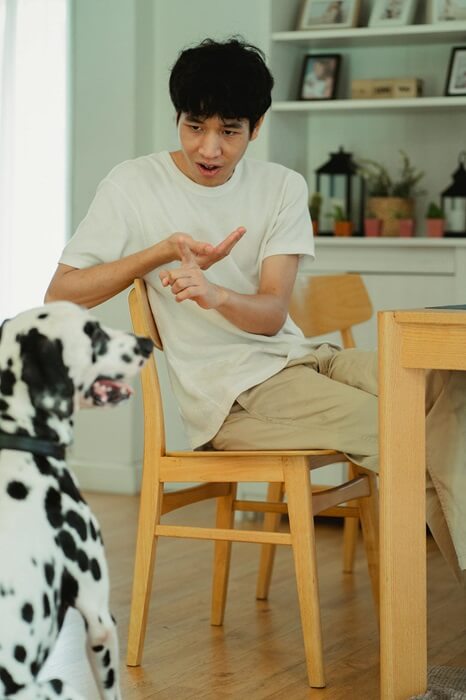

Know Your Dog’s Place in the Pack
Dogs generally fall into one of three places within a pack. Front of the Pack, Middle of the Pack, and Back of the Pack.
Back of the Pack dogs are usually dogs with behavior issues such as being fearful, have separation anxiety, neurotic behavior, OCD, bipolar, bark incessantly, whine excessively, they are difficult to train, don’t pick up on human nonverbal cues, dislike strangers, dislike other dogs, aggressiveness, possessiveness, they’re difficult to housebreak, and they typically do better when they are the only dog in the household.
Front of the Pack dogs have owners who brag that their dog was nearly perfect from day one. They are natural leaders. They are role models for Back of the Pack and Middle of the Pack dogs. They have a “serious” personality vibe. They hardly need any training, but they are quick to learn if you do get them trained. They are naturally well-behaved all the time and they have good manners. They naturally respect their human’s space. They have a calm demeanor, not hyper. They get along with other dogs, they aren’t fearful of strangers, they don’t jump on people, they don’t pull when you walk them, they are easy to housebreak, and they do well in single and multi-dog households.
Middle of the Pack dogs are the happy-go-lucky, friendly, outgoing dogs that make great family pets. Most likely, your dog is a Middle of the Pack dog. They want to please their humans. They pick up on non-verbal human cues. They require training, but are typically easy to train, and easy to housebreak. They love to play. They love kids and make great babysitters. They are just naturally great dogs. However, a Middle of the Pack dog needs a pack leader to establish boundaries, structure, limitations, and discipline. If you don’t have a Front of the Pack dog in your house to provide this to them, I am not suggesting you get another dog. YOU must take on the role of pack leader and provide these foundations to your dog. If you don’t, your dog will be out of control. If you are not the pack leader, they will assume the role of pack leader.
Dog Parks
Stay away from dog parks. The person who came up with the idea of “dog parks” had absolutely no knowledge about canine instincts. It was likely born of the idea that we take human children to a park to play with other children, so why wouldn’t it have the same benefit to “socialize” dogs? It may seem logical, but dogs are descended from the wolf. Wolves are pack animals and wolves have territories with boundaries as strictly defined as our state borders. If a wolf from another pack crosses into their territory, even accidentally, the pack will immediately hunt them down and kill them.
To your dog, his territory is his house, his backyard and then it transfers to your vehicle when you take him somewhere. You and everyone who lives within his territory, including humans, other dogs, cats, birds, etc. are his pack.
It may not seem obvious, but when a dog first approaches a dog park, they are immediately confused. It goes against his natural territorial and pack instincts.
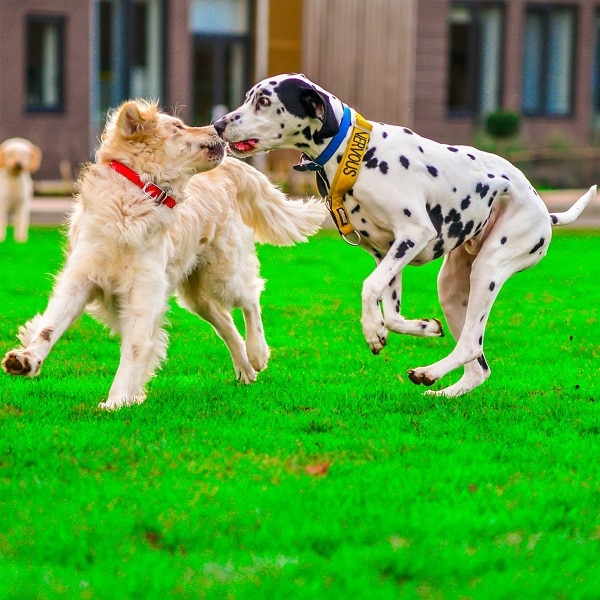
He wonders if this is now his territory, or if he is entering another pack’s territory? If you’re lucky, his desire to play with other dogs will overpower his confusion and he will have a good time. But one wrong move and innocent play can quickly turn into a fight to the death.
Furthermore, dog parks are cesspools of disease. You have no idea whether those other dogs have all their shots, or whether they have fleas, ticks, and parasites. You don’t know whether they have contagious bacterial or viral infections. You are at the mercy of how well a stranger takes care of their dog. No matter how clean a dog park may appear, it is not a sanitary environment. Canine diseases are transmitted in saliva, dander, and feces, spread though the ground, air, and physical contact. A dog will inevitably poop while at the park, and even if he has a responsible owner who picks up after him, let’s face it, there is still a poopy residue left behind on the grass. Your dog steps on the residue, goes home, licks his paws or scratches his eyes or ears, and the next thing you know you have a $500 vet bill.
Off Leash Dogs
I do not train off leash because I do not believe any dog should ever be off leash in public. You can never be certain how your dog will react to another dog, stranger, squirrel, or unforeseen circumstances.
In 100% of altercations between a large breed dog and a smaller dog (or human) the large breed will ALWAYS be found guilty, regardless of who was the instigator. This is especially true for Pitbulls and Rottweilers.
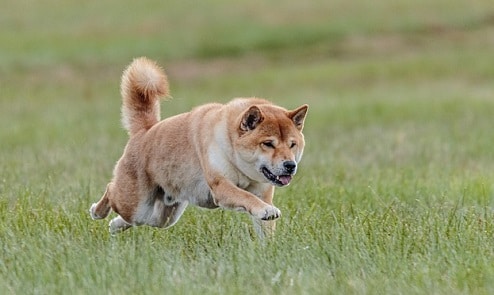
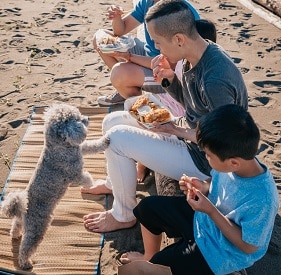
People Food
If you don’t want your dog to beg for food or stare at you drooling while you eat, refrain from giving your dog “people food”. This is imperative if you are taking your dog to restaurants. If you are going to share your food, never feed them directly from the dinner table or your plate; it’s best to put the food in their bowl.
Quality Dog Food
I cannot stress enough how important it is to feed your dog quality food. Most commercial dog food has little nutritional value. Bad nutrition causes shedding, bloating, farting, diarrhea, excessive waste, and it negatively affects dog behavior because they don’t feel good. Research quality dog food and find the best quality dog food you can afford. Visit Dog Food Advisor, which ranks the nutritional value of a huge variety of dog food. Some parts of the website require paid membership, but the section with dog food ratings is free.
For the record, there is absolutely nothing wrong with feeding your dog dry kibble as long as it is a high-quality, grain-free dog food produced by a reputable manufacturer. Dogs are carnivores. Although they’ll eat just about anything, dogs aren’t designed to digest a lot of rice, barley, wheat, or corn at every meal. “Fresh” pet food is a marketing scheme that preys on a dog-lover’s desire to give their dog the “best”. Fresh dog food is not any healthier than high-quality grain-free dry kibble, it’s just more expensive.
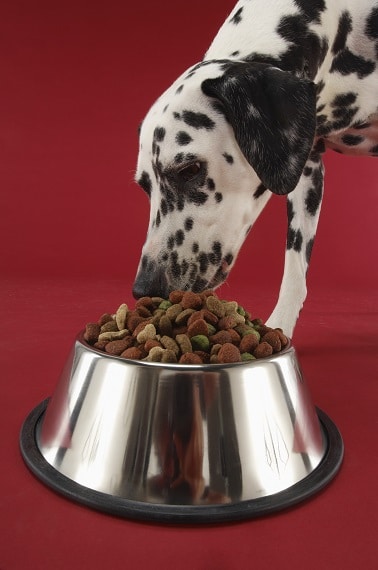
Locally, Pet’s Barn brand Activa Grain-Free dog food, particularly the potato-free variety, is an excellent choice. You can even customize it by adding enrichments at no additional cost that will target your dog’s specific needs such as heart health, bones and joints, shedding, itching, etc. Have a picky eater? Pet’s Barn will exchange the bag of food if your dog doesn’t like it.
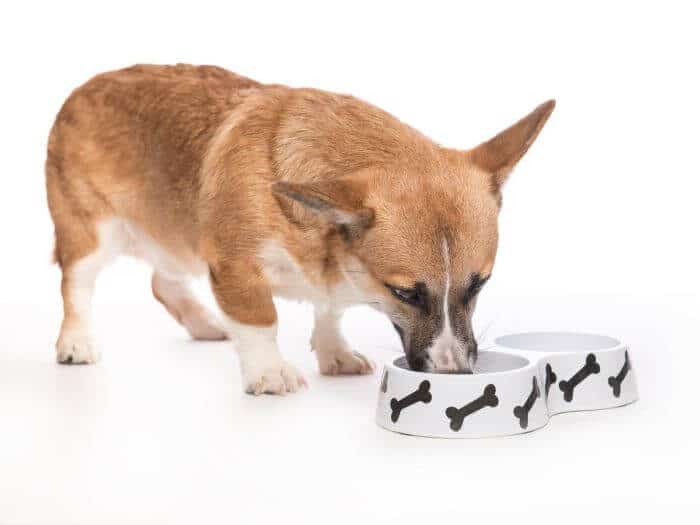
Feeding
Do not free feed your dog by leaving food out all day. It’s not natural for a dog to graze. Food is not readily available in the wild; they have to hunt for it. Feed your dog either two or three times per day. Once per day is not enough; would you want to go 24 hours between meals? Neither does your dog.
If your dog does not eat his meal within 15 minutes of serving, pick up the bowl and try again at the next meal. If he refuses to eat for an entire day and again the next morning, try to determine whether he is not eating voluntarily or if he is sick. Tempt him with a piece of chicken; if he eats it, he is hungry and is just refusing to eat for whatever reason. A sick dog won’t eat anything. Try a different brand or flavor of food. If he eats the chicken, but then vomits, take him to the vet.
Will Work For Food
Nothing in a dog’s life should come for free. Whenever giving your dog a toy or treat, require them to perform a command or trick such as sit or rollover. This includes when feeding your dog daily meals; they should be required to sit patiently until their bowl is placed in front of them. Ideally dogs should be in the sit or down position before petting and giving affection.


Toys, Toys, Toys
Toys can be a wonderful training tool, and they can make playtime more fun. They should not be used as an alternative to interaction. Dogs should not have free access to toys; they should be kept out of sight until you are going to use them for play or training.
A Dog’s Purpose
Decide what kind of dog you want. If you bought or adopted your dog mainly for the enjoyment of your children, and you allow them to play excitedly all day long, don’t expect the dog to magically calm down just because it’s time for the kids to go to bed.
If you want a calm and obedient dog most of the time, teach your children how to play calmly with the dog. To dogs, kids are walking, talking toys, but it doesn’t mean they can’t play less excitedly and still have fun. Children should be actively involved in the training of the dog and incorporate commands frequently into play. The dog should perform equally well for the children as the adult in the home.
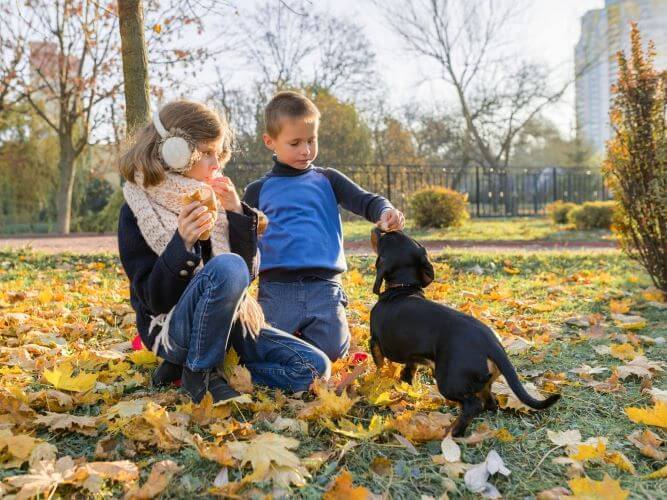
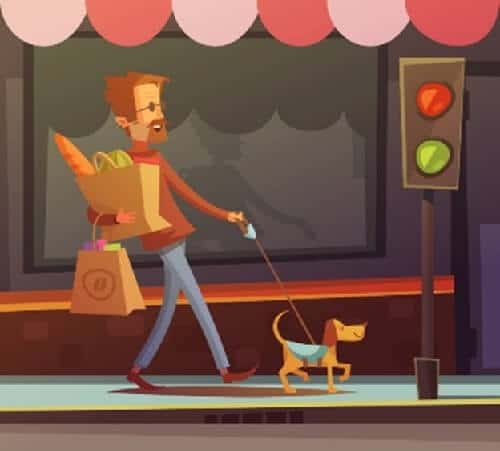
Take Me With You!
Dogs are the only species on Earth that want to be with humans 24/7. They will be happy to go with you anywhere, except maybe the vet.
El Paso is actually a pretty pet friendly city. There are a lot of businesses you can take your dog, other than pet stores, that don’t require them to be a service dog: Cielo Vista Mall, Sunland Park Mall, Abercrombie & Fitch, Academy Sports, Ace Hardware, Ann Taylor, Apple Store, Banana Republic, Barnes & Noble, Bass Pro Shops, Bath & Body Works, Bed Bath and Beyond, Bloomingdale’s, Cabella’s, Crate & Barrel, Foot Locker, Gap, Hallmark, Harbor Freight, Hobby Lobby, Home Goods, Home Depot, JoAnn Fabrics, Lowe’s, Macy’s, Marshalls, Michaels, Neiman Marcus, Nordstrom, Old Navy, Petco, PetSmart, Pet’s Barn, Pottery Barn, Ross, Saks, Sephora, The Container Store, Tiffany, TJ Maxx, Tractor Supply, and Urban Outfitter.
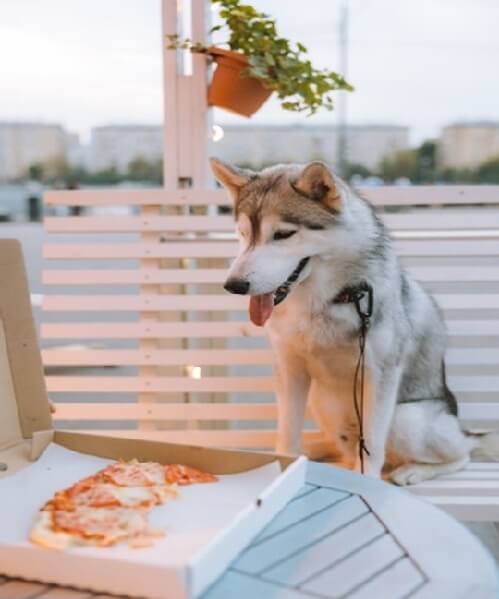
El Paso also has a lot of restaurants that are pet friendly. Local establishments listed first. Let’s support our own community!
DeadBeach Brewery, Gringo Theory Patio Bar, Mac’s Downtown, Toro Burger Bar, 501 Bar & Bistro, Aceitunas, AJ’s Diner, The Bagel Shop, Basico Bistro, Block-Table, Boozy Tacos, Burritos Crisostomos, Charcoaler, Chuy’s, Clasico Kitchen, Coco.Miel, Coffee Box, Craftbox, Desert Oak BBQ, Five Guys, German Pub, Get Together, Happy Monk, Kona Grill, Marina’s German Bakery, Mas y Menos, Nour Mediterranean Cafe, Peter’s German Grill, Pho Tre Bien, Piedmont Cafe, Rainbow Fountain, Ripe, Soggy Peso, Sunny’s Sushi Steak & Seafood House, The Kitchen at 150, The Union Drafthouse, Thyme Matters, Tin Man, Tippi Teas, Bahama Buck’s, Blake’s Lotaburger, Buffalo Wild Wings, Chipotle, Coldstone Creamery, Corner Bakery, Eloise, Famous Dave’s, Hope & Anchor, Jason’s Deli, Jersey Mike’s, Landry’s Seafood, The Melting Pot, Menchie’s, Panda Express, Potbelly Sandwich Shop, Rudy’s BBQ, Sclotzskey’s, Smashburger, Starbucks, Taco Cabana, Twin Peaks, Whataburger, and Wienerschnitzel.
Dog Conversation
Humans communicate by eyes, ears, then nose. Dogs communicate by nose, eyes, then ears. Dogs communicate primarily through scent and sense; dogs do have a form of ESP. Everything they need to know is what they can smell and what they can sense from the environment around them. When you talk to your dog, it is for your benefit, not theirs. Dogs become excited when they hear high pitched voices because they’re programmed to hear the high-pitched squeal of prey.
If your dog is hyper or easily excited, it is important to try to keep your voice low and calm as much as possible. To a dog, it’s not what you say that matters, it’s how you say it.
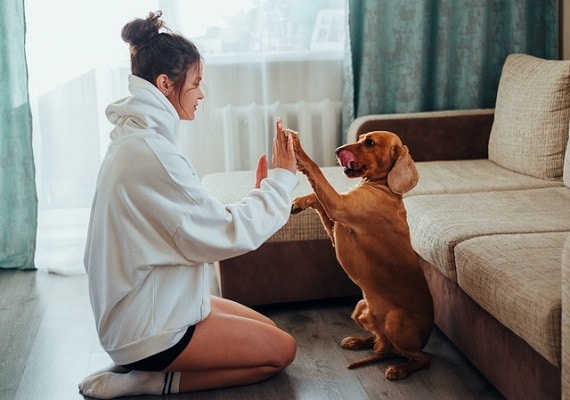
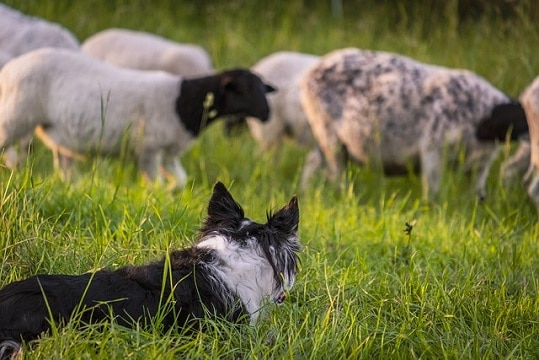
Know Your Dog
For centuries, dogs have been bred to perform specific tasks. Research your dog’s breed at AKC or find a reputable breed-specific website.
Familiarize yourself with your dog’s breed to understand the instincts that drive their behavior. Mixed dogs will likely take on the traits of the dominant breed, the one they look most like. Ask your vet for an opinion if the dog’s dominant breed is a mystery. There are also canine DNA tests now, but they can be expensive, and opinions vary on how accurate they are.
A Dog Is a Dog
It is true that caring for a dog is similar to raising a toddler in terms of what they need from us such as food, supervision, potty training, playful interaction, affection, and teaching the difference between right and wrong. Most dogs have the intelligence of a 2-3 year old toddler, but dogs do not think the way humans do.
Most of the human-like qualities we attribute to dogs are simply humans projecting their own feelings or thoughts onto the dog (anthropomorphism) or misinterpreting dog behaviors with our own motivations. Your dog is a dog.

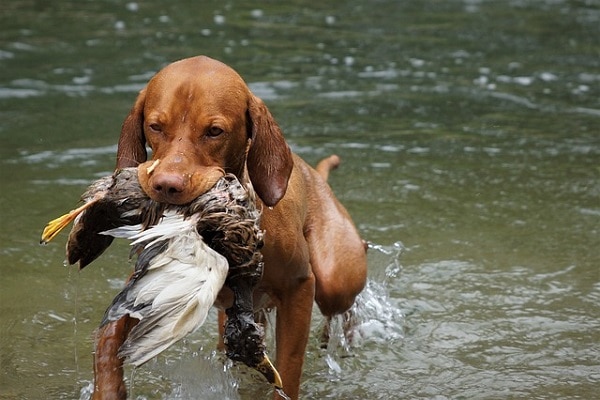
Instinctive Behaviors
A behavior that is a natural wolfly instinct to a dog (such as jumping, barking, and digging) cannot be trained out of them, they can only be corrected or given an alternative. For centuries, dogs have been bred to perform certain jobs. These breed-specific instincts cannot be trained out of them. Herding dogs will herd, hunting dogs will chase, rodent dogs will dig, terriers will bark, and guard dogs will protect.
If a dog has been mistreated in their past, they may have behaviors such as separation anxiety, timidness, shyness, fear of strangers or other dogs, hesitation, flinching, aggressive, possessive, territorial, eating fast, housebreaking problems, etc. Most of these behaviors cannot be trained out of the dog if they stem from prior abuse.
Compulsive Behaviors
There are also compulsive behaviors that cannot be cured, such as “phantom pregnancy”. For example, even though one of my Rottweilers is spayed, twice a year her brain tells her body that she’s had a litter of puppies, and she desperately needs to mother anything that will take the place of her “puppies”.
She goes around the house stealing toys, shoes, socks, small pillows, nothing is off limits, and she stockpiles them in a bedroom or her crate. If she can’t find her “puppies”, she starts crying, and I mean a heart-wrenching wail of a cry that just breaks your heart. If my other dog gets near Eleanor’s “puppies” she goes in to protective mode. Stealing items and maternal aggressiveness are not behaviors that can be trained out of her; it’s a condition that we have to accommodate because we love her.
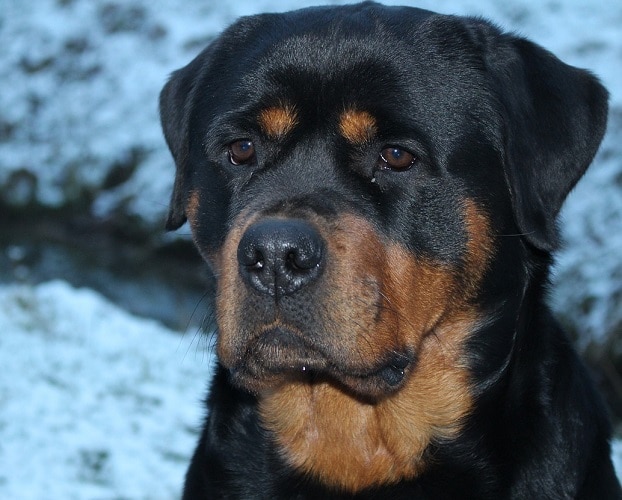

Choosing a Dog Trainer
If you’re reading this guide, I probably gave it to you when we met for the free consultation, or maybe you’re reading it on my website. Choosing a dog trainer is an important decision and I encourage you to interview multiple trainers to find the right trainer for you and your dog. I hope that you choose K9 Basix, but if you’ve decided to keep looking, I sincerely wish you the best. In doing your research, please keep in mind that dog training is an unregulated industry and there is a lot of fraud out there. Anyone can read a book or watch You Tube and declare themselves to be a dog trainer. These fake trainers give us all a bad name, and I just want to share with you some red flags so you can spot a fake trainer, and what to look for in finding a professional trainer that won’t take advantage of you.
There is no one right way to train a dog, but there are a lot of wrong ways to train a dog. Avoid trainers that don’t have a professional website; it’s OK if they don’t advertise their prices, but it’s even better if they do. Avoid trainers that only have a Facebook page or Instagram account. A legitimate dog training business will pop up when you do a Google search for generic terms such as “dog trainers in El Paso”. Be skeptical of a trainer that doesn’t have Google reviews. And if they do, read every review! Take negative reviews into consideration, but keep in mind there are two sides to every story. Don’t be shy – ask for references, especially for specialized training like service dogs.
A good trainer will ask you a lot of questions before they offer advice or propose their services to you. Be wary of trainers that “guarantee” results, especially for behavior issues; no trainer can guarantee results because there are too many variables that influence dog behavior. A good trainer will answer all of your questions over the phone for free. Training fees vary widely, from a few hundred dollars to a few thousand dollars for the exact same service; just make sure you understand what you’re paying for. A professional dog trainer will detail their program in a written agreement that spells out their responsibilities, as well as yours. Beware of trainers that want to meet at a park. Avoid trainers that use a clicker; clickers are for training elephants and dolphins, not dogs.
Thank you for taking the time to read this guide. I wish you all the best in forming a mutually respectful and rewarding relationship with your dog.
Monique Aguilar, Dog Trainer
K9 Basix, LLC
